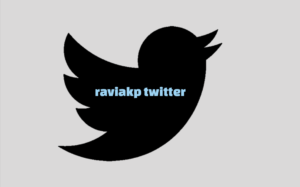How to Write an Email Newsletter That Grabs the Attention of Subscribers
Business online newsletters are a fantastic way to reach an audience. If you’ve been considering setting one up, there’s no time like the present.
There are many different kinds of newsletter platforms, and most are user friendly. It’s fun putting together a compelling newsletter and engaging with your audience.
If you’re eager to learn how to write exceptional email newsletters, here are a few tips that’ll help.
Your subscribers are going to fall in love with your newsletter, thanks to your hard work!
1. Decide What Type of Newsletter You Want to Send
As a business, you might be learning about your audience or feel you know them well.
It doesn’t matter where you’re at, as long as you’re trying. Established companies still continue to gather more intel about their audience!
Based on what you know about your audience, work up a newsletter you think they’ll respond to the most.
If you’re not sure where to start, consult with a marketing professional. You can always employ some help from a marketing company.
Split Testing
If you do go ahead and try to master the art of newsletters on your own, consider split testing. Sometimes you have to do split testing to figure out what type of newsletters work best.
Spit testing is a way to compare two different kinds of newsletters. Using this “test” is excellent if you’re unsure what type of newsletter will grab more attention.
Different Kinds of Newsletters
So, what type of newsletters are there? Sending out a newsy email, product launch, or blog post are a few different kinds.
Experiment with a few different types to see which ones get read the most.
On your email platform, you should also look into what kind of click-throughs you receive. What the results reveal will guide you on what type of newsletters to write in the future.
2. Send High-Quality Emails
Emails that get sent with mistakes galore aren’t going to grab the attention of readers. In other words, you shouldn’t push out a newsletter that has blurry images and incorrect grammar.
Instead, send high-quality emails. Well-written articles, tips, and other tidbits of information should do the trick.
Your attention to detail won’t go unnoticed by your subscribers. They’ll find your newsletters valuable and attention-grabbing.
So work hard to focus on pushing out emails packed full of the good stuff, minus the errors.
3. Write Content That’s Easy to Read
Even if you’re fantastic at technical writing, that doesn’t mean your audience will appreciate it. When crafting a newsletter, keep your vocabulary simple.
It should be easy for them to read along and understand your message. If it isn’t, they won’t finish the newsletter.
Nowadays, people’s attention span is short, so it’s up to you to get their attention right from the get-go. They’re busy and on the go. They don’t have time to read a long and technical email!
Make it your goal to develop persuasive yet simplified newsletters. This type of strategy will keep your audience coming back for more. (And don’t forget to make them fun too!)
4. Establish a Schedule
It’s hard to get readers addicted to your newsletters if they go out sporadically. It’s okay if you forget to email your audience one every once in a while. But try to establish a schedule so that you’re consistent.
Create a newsletter calendar to stick to a schedule, like a blog schedule, if you have one. You could stick both schedules on the same calendar if you’d like!
Figure out ahead of time what type of newsletter you’ll be putting together and what day of the week. You might want to start by e-mailing one out every other week in the beginning.
If you overwhelm yourself, there’s a good chance a newsletter won’t get sent out at all. Establish a schedule, and it’ll help you follow through with your marketing goals.
5. Don’t Forget a Call to Action
Even though newsletters shouldn’t be sales pitchy, you should still have a call to action. Try to sprinkle one in on every newsletter.
For example, if you have a pet business, come up with a fun CTA (call to action). For instance, you could say, “Check out our store for high-quality pet food your furry friend will love!”
A CTA should be toward the end of a newsletter so it won’t take away from the rest of your content.
And if you want to create a fancy button graphic for them to click on, that’s a good idea too.
In Conclusion
So what do you think about email newsletters? It turns out they can be a lot of fun, right?
Even if you’re not a pro, you can become one by practicing. Practice makes perfect!
The more consistent you are, the greater the rewards will be. So get busy crafting your first newsletter. It’s going to be amazing!






